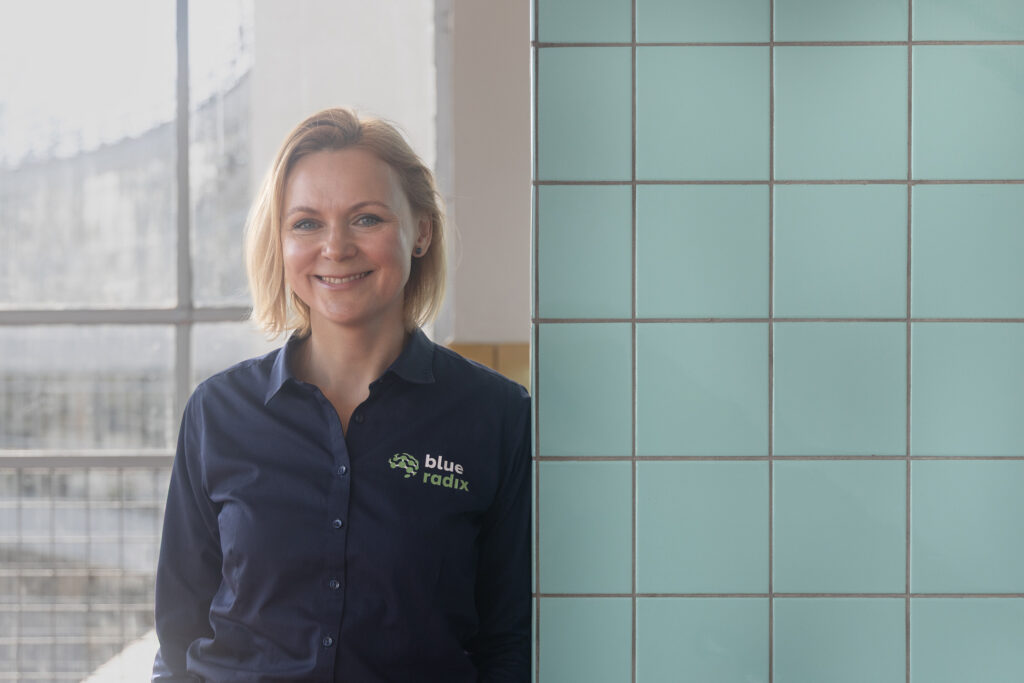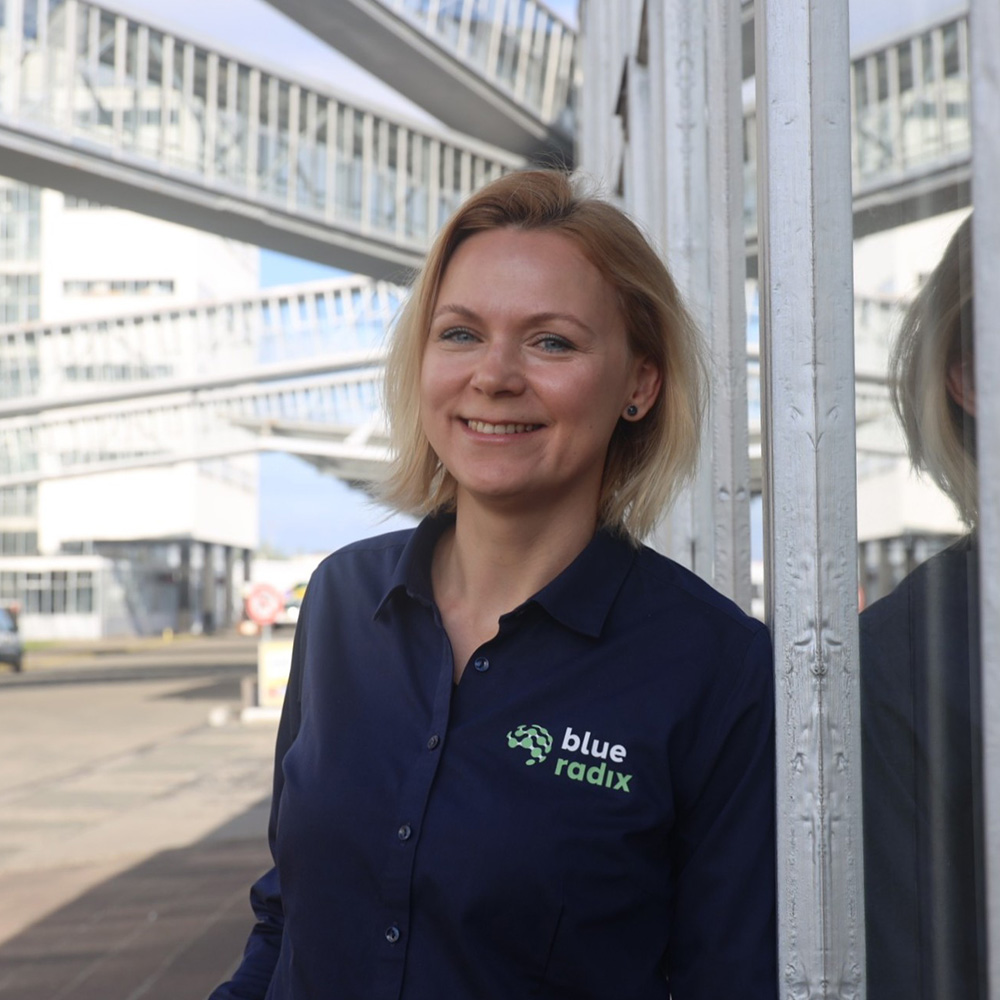
Daria Noda brings years of international experience and a deep-rooted passion for horticulture to her role as Sales Manager Europe at Blue Radix. Since joining the team in January 2025, she’s been dedicated to helping growers across Europe embrace autonomous greenhouse operations.
We had the chance to speak with Daria about her journey so far and the insights she’s gained from working closely with growers in this fast-evolving industry.
What is your background in Horticulture and what drew you to Blue Radix?
Daria: When I entered our sector in 2019, I was an odd one out in a very close horticulture family: someone who never picked tomatoes in a family’s greenhouse. Quite quickly, the situation changed: I met passionate growers and colleagues all over the world and came to understand the challenges of today’s operations and sometimes the ups and downs of daily life.
What I’ve come to love most is the culture: it’s direct, curious, and unwaveringly passionate about the trade. Joining Blue Radix feels like being part of a new story, with fresh dynamics and exciting opportunities to scale up and make an impact.
You’ve worked with growers in very different parts of the world. What have you learned from that?
Daria: Whether I’m talking to growers in France, Kazakhstan or Canada, one thing always stands out: they’re incredibly hands-on, practical, and deeply committed to their crops. But the level of support available to them varies greatly. Some work in small teams or even alone, shouldering a huge mental load every single day.
When I first entered the industry at Royal Brinkman as an account manager, I had the privilege of working closely with horticulture clients across Central Asia, guiding them in the use of greenhouse hardware and machinery. This role wasn’t just about providing technical advice—it was about fostering growth by extending the client base and promoting greenhouse horticulture.
I participated in regional trade missions, international exhibitions, and on-site meetings with customers and prospects, which gave me firsthand insight into their daily challenges. It was through these experiences that I saw how fast-paced and agile the industry could be—where every priority felt like it was due yesterday. Growers constantly demand the very best of themselves, and service providers are always ready to step in and support them. Later, at Hagelunie, I experienced a much calmer and structured approach within the sector. That contrast made me realize the enormous potential autonomy has—not only for achieving efficiency but also for truly improving the quality of life for growers by giving them the space to focus on what matters most.
How do you explain autonomous greenhouse control to someone hearing about it for the first time?
Daria: Autonomous greenhouse control is about shifting from reactive to proactive systems. Instead of spending all day adjusting climate and irrigation settings, growers can set their crop goals, and the system handles the rest—day and night, even when they’re away. It’s like having a tireless assistant working in their crop’s best interest.
What sets Crop Controller apart is that it fully automates the decisions growers used to make hour by hour, ensuring optimal greenhouse conditions with consistency and less stress.
It respects the grower’s expertise while taking over the repetitive, technical tasks that often lead to sleepless nights. It’s not just innovation; it’s about building trust and helping growers to get back in control of their time. That’s what makes this solution so impactful.
What’s the biggest misconception people have about autonomous growing?
Daria: That it takes control away from the grower. In reality, autonomous control of climate and irrigation installations gives them clearer oversight and more time to focus on long-term strategy, team management, or simply taking a break. It doesn’t replace people—it supports them.
“Once you see how it supports your goals and your team, you might start to wonder how you ever managed without it.”
What are some of the challenges growers bring up when talking to you?
Daria: Growers often share challenges like labor shortages, rising energy costs, and overwhelming workloads. Many feel tied to their greenhouses 24/7, managing countless small decisions and struggling to find time for anything else. Scaling operations is a goal for many, but they worry about how to maintain quality along the way.
That’s where solutions like Crop Controller come in—it acts as a reliable, data-driven partner that grows with them. By offering precision and consistency, it serves as a second pair of eyes, empowering even the most efficient growers to reclaim their time and focus on bigger-picture goals.
What do you enjoy most about working with growers?
Daria: Honesty and passion. Growers don’t sugar-coat things. They tell you when something works—and when it doesn’t. That makes every conversation meaningful. And when they start seeing the benefits of autonomy, their excitement is contagious.
Where do you see the horticulture industry heading in the next five years?
Daria: First, there’ll be more greenhouses due to the various challenges of today: there is a growing global population, there is less soil, there are climate changes, there are political disruptions that push us to grow locally. I believe we’ll see a shift from manual control to strategic oversight. We’ll see more robots and efficiency.
Growers will use data and autonomy to scale their expertise, not just their hectares. I’m sure the harvest of 100 kg tomatoes per m2 is not the limit. It won’t take long till a grower overachieves this holy number. And when they do, I will happily join them in picking those tomatoes.
Final question—what would you say to a grower who’s curious but unsure about making the shift to autonomous growing?
Daria: I would say: Once you see how it supports your goals and your team, you might start to wonder how you ever managed without it. So let’s talk.

